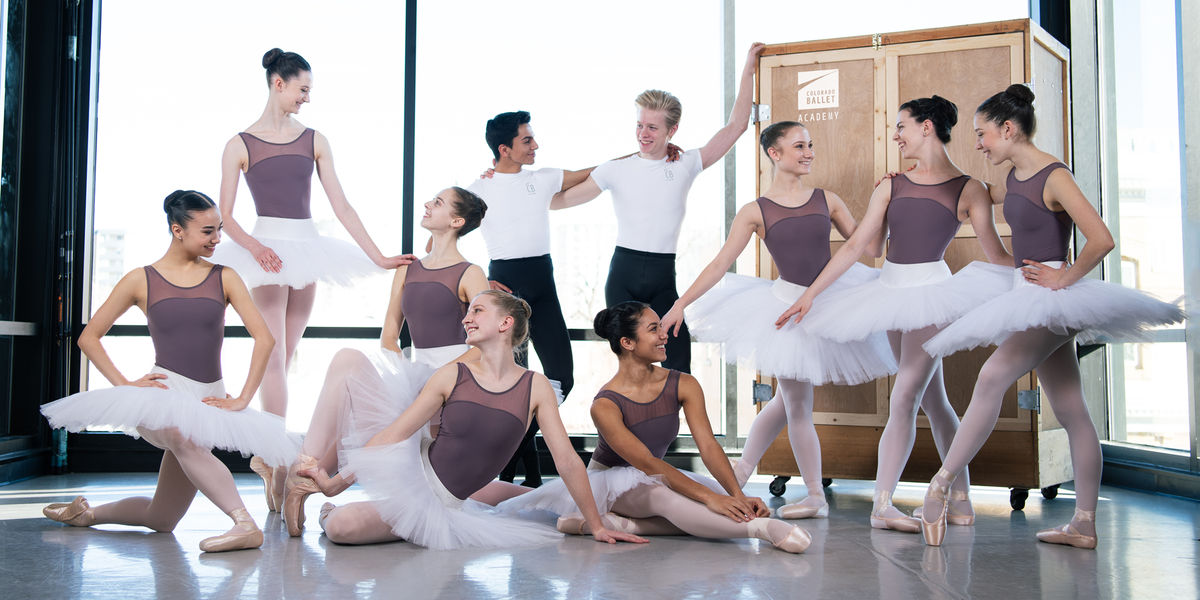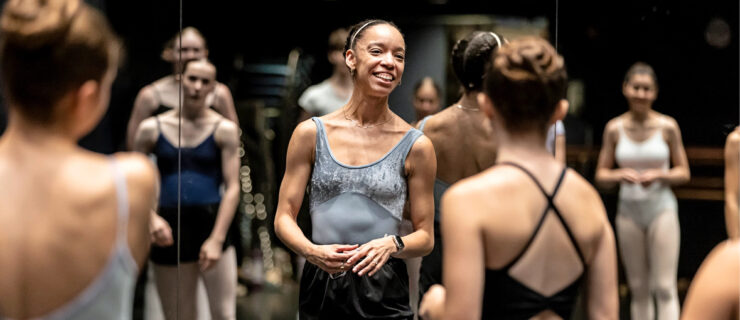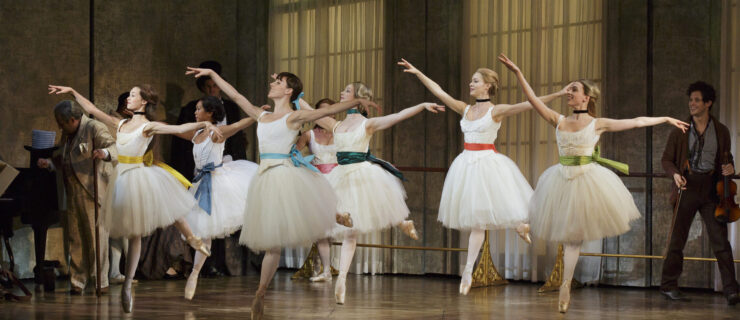Here's What Every Ballet Student Should Look for in Their Training Program
When you’re looking for a ballet program to take you to the next level, there are a lot of factors to consider. While it’s tempting to look for the biggest name that will accept you, the savvy dancer knows that successful training has more to do with the attention and opportunities you’ll get.
We put together a few of the most important things for dancers to look for in a summer or year-round training program, with the help of the experts at Colorado Ballet Academy:
A clear path to job opportunities.
Like most programs, the summer intensive at Colorado Ballet Academy is the threshold to becoming part of the year-round school. (In fact, Academy director Erica Fischbach says that some past summer intensive dancers have been hired directly into the studio company.) But what makes CBA stand out are the clear stepping stones toward a company contract that include benefits like pointe shoes and an hourly wage, rather than a bill.
According to Fischbach, Colorado Ballet artistic director Gil Boggs chooses two to three trainees every year who receive large scholarships and a shoe allowance. Trainees understudy company roles in addition to their pre-professional training schedule and often end up performing in company productions. “It is a true trainee opportunity,” says Fischbach, “because you are not paying to be here, and you get experience with the company.”
Approximately six pre-professional students are accepted into Colorado Ballet’s Studio Company each year, which is a paid position, says Fischbach. The Studio Company gets to dance with the main company extensively during the season as well as take on soloist and principal roles in their own performance series throughout the region.

Training that nurtures the whole dancer.
If you’re moving away from home to train, look for schools that have opportunities to prepare your mind as well as your body. At CBA, pre-professional students have a weekly life skills class that includes talks on wellness and nutrition, injury prevention with Colorado Ballet company physical therapists, and a wide range of other offerings.
“We have a series called theatrical careers where someone from every department in Colorado Ballet comes to talk about their job and what led them there,” says Fischbach. “As a dancer I had no idea how many people were working to make my career possible, so it’s my goal to open our students’ eyes to the people working around them and the opportunities in those careers.”
Other sessions teach students how to write compelling bios, resumes and cover letters, or give costume-making tutorials, so students have the skills to handle a costume disaster on their own if they need to. The program also provides students with access to sessions with a mental health professional, and the company’s onsite physical therapists and massage therapists at reduced costs.
Stage time.
At CBA, the amount of performance opportunities mimics company life in order to fully prepare students for a career in dance. They have two big shows: A “Fall Feature” and an end-of-school-year production at the Ellie Caulkins Opera House where the professional company performs. But it’s more than a run-of-the-mill recital: Fischbach and Academy faculty adapt a full-length classical ballet. “It gives the students the opportunity to work on classical technique and artistry and to be a part of of a multidimensional production,” says Fischbach. “They aren’t just performing excerpts; they are contributing to the larger story.”
The pre-professional levels also have a “Saturday Soiree” performance every five weeks in Colorado Ballet’s black box theater. “Sometimes the choreographers are company members, ballet mistresses or local choreographers from outside of the ballet, so they get a nice range of experiences,” says Fischbach. The series also includes a final performance of a student choreographic workshop where pre-pro students cast and choreograph new works on each other.
An appealing location.
Look for a place that will inspire you in and out of the studio. Every year, Fischbach takes the pre-professional dancers on a hike to kick off the school year. “I want them to start off knowing what is out there and how lucky we are to be in this beautiful place,” she says. Denver is known for its breathtaking mountains and natural spaces, but also boasts a dynamic food scene, professional sports teams, and one of the most famous music venues in the world—Red Rocks Amphitheater. Summer intensive students get to take it all in during weekend trips.

Unique experiences.
The summer intensive chaperones at Colorado Ballet Academy aren’t your average RAs. The academy employs Colorado Ballet company dancers to come up with weekend activities, get students to and from the studios on the light rail, and deliver lunch catered by local restaurants. The result is that CBA summer students spend time with professional dancers to cultivate mentors, ask questions about the trials and excitements of a pro dance career, and get advice.
Star power.
The Academy’s summer intensive is directed by American Ballet Theatre luminaries Amanda McKerrow and John Gardner. “Their personalities are so generous and inclusive,” says Fischbach. “They are directly involved with every single dancer. They know everyone’s name and training history, and at the end of each day, they see all the students off to their dorms with high-fives.”
Students also benefit from learning repertoire directly from the dancers who performed it—and from the individualized attention that the faculty members provide. “They have a gift for inspiring every dancer to unlock artistry they didn’t know they had,” says Fischbach. “Every student feels like they are an important part of the intensive. They leave with an immense sense of accomplishment and confidence.”





